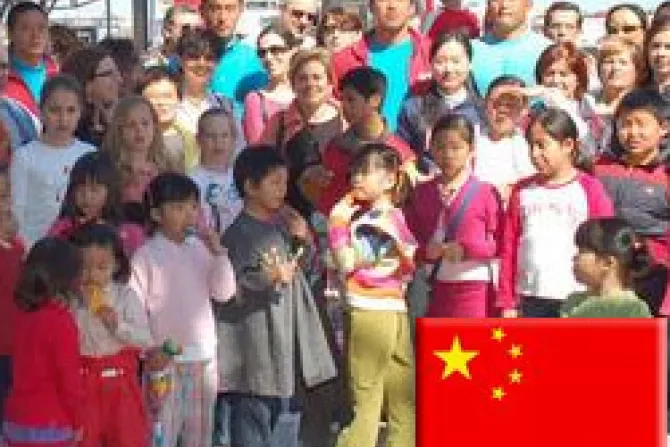Shanghai, China, Jul 27, 2009 / 22:27 pm
In a sign that the Chinese government may be taking a step towards ending its oppressive one-child policy, authorities in Shanghai encouraging thousands of couples to have a second baby to offset the graying of the Chinese population.
The official encouragement is the first in thirty years, the Times Online says. Authorities fear the growing demographic imbalance in Shanghai, China’s economic capital, concerned that the younger generation will not be able to support the aging population.
"We advocate eligible couples to have two kids because it can help to reduce the proportion of the aging people and alleviate a workforce shortage in the future," commented Xie Linli, director of the Shanghai Population and Family Planning Commission.
Zhang Meixin, a spokesman for the Shanghai commission, said that the city’s over-60 population is already more than three million, comprising 21.6 percent of registered residents.
According to the Times, by 2020 the proportion of the elderly is expected to rise to 34 percent of the city’s population.
Across China the working-age population is expected to start shrinking in about 2015, with the total population peaking in 2030. Projections from the U.S. Center for Strategic and International Studies predict that by 2050 China will have more than 438 million people over the age of 60 and more than 100 million over the age of 80. There will be only 1.6 working-age adults for each person aged 60 or over, compared with 7.7 in 1975.
Under the one-child policy, all pregnancies are monitored and sometimes forcibly aborted. The policy was a population control measure intended to halt the growth of China’s population, the most populous in the world at 1.3 billion people.
Urban parents are permitted to have two children if the husband and wife were only children. In Shanghai the numbers of such couples have increased from 4,300 in 2005 to 7,300 in 2008. However, most couples who are permitted to have two children still only have one.
Couples in rural areas are allowed a second child if their first is a girl.
A cultural preference for boys has combined with the one-child policy to further skew the Chinese population by motivating parents to abort unborn girls. According to the Population Research Institute, a British Medical Journal study published in April 2009 found that males under the age of 20 exceeded females by more than 32 million in China. More than 1.1 million "excess births" of boys occurred.
Based on 2005 census figures, there were 126 boys for every 100 girls in the one- to four-year old age group, the greatest imbalance yet. The respective natural birth rate for boys and girls is 107 males / 100 females.
The Chinese gender imbalance also portends great social problems in the future when significantly more men cannot find women to marry.
According to the Times Online, an online opinion poll at Sohu.com about the relaxation of the one-child policy showed 374 respondents supported the policy, while 514 were opposed.
One chat room commentator said it should have been done long ago.
"Otherwise, in a few years, a child will have no uncles, no aunts. These titles will be completely forgotten."
Another commenter said, "These days who dares to have a second baby? The cost of living and education are so high. Best not to have one at all."
(Story continues below)
Yet another writer recalled the policies of the 1950s and 1960s when Chairman Mao encouraged large families.
"Our parents were poor and they had five or six children. Now we are better off, but having even one baby is difficult. In the future we may not be willing even to have one and it will be like the West with a falling population. Terrible!"


